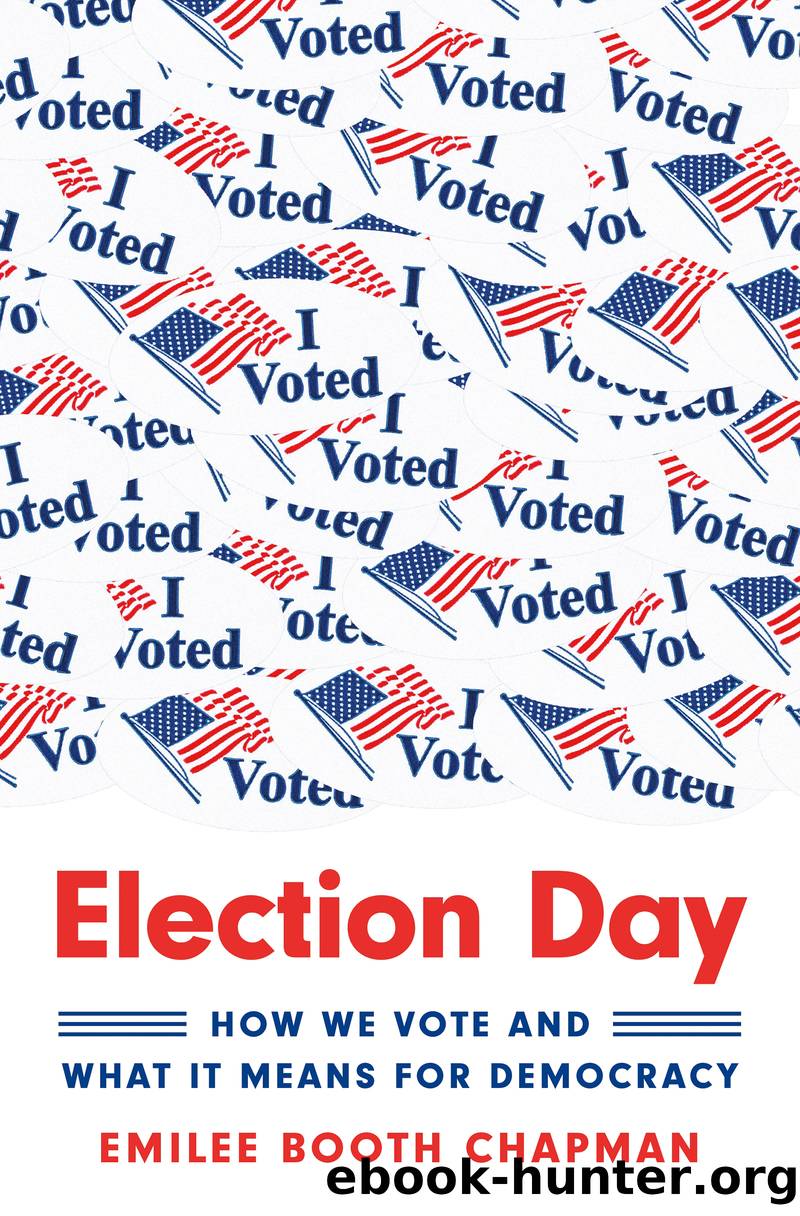Election Day by Emilee Booth Chapman;

Author:Emilee Booth Chapman;
Language: eng
Format: epub
Publisher: Princeton University Press
Published: 2022-08-27T00:00:00+00:00
51. As E. E. Schattschneider put it: âthe unforgiveable sin of democratic politics is to dissipate the power of the public by putting it to trivial usesâ (Semisovereign People, 137).
4
Voting with Political Parties
On November 2, 2010, Election Day, thousands of voters in the state of Maryland received a robocall telling them that the Democratic incumbent Martin OâMalley had won the gubernatorial election, and âthe only thing left is to watch it on TV tonight.â The call was made two hours before the polls closed. This robocall came from the campaign of the Republican challenger Robert Ehrlich, Jr., though it was scripted to sound as if it was coming from Democrats. The call went out to voters in the two largest majority-Black counties in Maryland. The script was crafted by a campaign consultant who had previously stated that the âfirst and most desired outcomeâ for the Republican campaign was âvoter suppression.â This Election Day robocall intended to deceive likely Democratic African American voters, apparently with the goal of keeping them away from the polls in the final hours of the election.1
The campaign manager and the consultant who crafted the call were both convicted of violating Marylandâs election laws. The robocall was an illegal campaign tactic. But the strategy of suppressing turnout for the opposing party is all too common. One legal tactic for suppressing voter turnout frequently employed by Republican Party operatives is to challenge voter registrations on the grounds that they appear fraudulent, out-of-date, or otherwise suspicious. When these challenges are successful, they put the onus on registrants to provide proof of their continued eligibility to vote. Those who fail to do so in the designated timeframe may have their registrations removed from the voter rolls or their votes invalidated. Typically, these challenges are facially neutral, but they may target voters in disproportionately Democratic jurisdictions or use criteria that disproportionately affect registered Democrats or likely Democratic voters.2
Political parties are inextricably linked to the practice of popular voting in modern democracies. Electoral institutions shape the kinds of party systems that develop, while parties and party systems affect who votes and how voting works in practice. It may be possible to analyze some aspects of modern democracy without discussing political parties. Popular voting is not one of them.
The prevalence of partisan efforts to suppress voter turnout like those I have just described may lead to the impression that party politics should be viewed primarily as a threat to the value of popular voting that I have described in this book. Even parties that donât find voter suppression to be a beneficial campaign strategy are hardly neutral in choosing sites for voter registration drives or in choosing whom they encourage to turn out. The idea that political parties share an ambition toward universal participation or help citizens to view each other as equals and as co-participants in a common democratic project sometimes seems laughable.
And yet, as I will argue in this chapter, party politics has beenâand continues to beâinstrumental in shaping the modern practice of popular voting, including the expectation of approximately universal turnout.
Download
This site does not store any files on its server. We only index and link to content provided by other sites. Please contact the content providers to delete copyright contents if any and email us, we'll remove relevant links or contents immediately.
The Secret History by Donna Tartt(18146)
The Social Justice Warrior Handbook by Lisa De Pasquale(11950)
Thirteen Reasons Why by Jay Asher(8443)
This Is How You Lose Her by Junot Diaz(6430)
Weapons of Math Destruction by Cathy O'Neil(5823)
Zero to One by Peter Thiel(5486)
Beartown by Fredrik Backman(5348)
The Myth of the Strong Leader by Archie Brown(5236)
The Fire Next Time by James Baldwin(5014)
How Democracies Die by Steven Levitsky & Daniel Ziblatt(4950)
Promise Me, Dad by Joe Biden(4907)
Stone's Rules by Roger Stone(4852)
100 Deadly Skills by Clint Emerson(4683)
A Higher Loyalty: Truth, Lies, and Leadership by James Comey(4546)
Rise and Kill First by Ronen Bergman(4542)
Secrecy World by Jake Bernstein(4387)
The David Icke Guide to the Global Conspiracy (and how to end it) by David Icke(4376)
The Farm by Tom Rob Smith(4320)
The Doomsday Machine by Daniel Ellsberg(4240)
